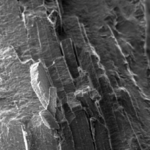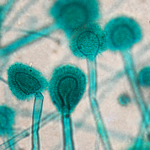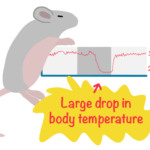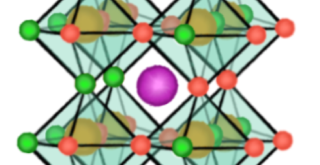The KAI2 receptor for compounds found in smoke helps plants retain water and survive during drought
Recently I was struck by all the different ways that scientists are using genetics studies and manipulating biological signaling pathways to help plants grow in poor conditions such as drought. At our Center for Sustainable Resource Science (CSRS), we’ve seen genetic analyses lead to several different solutions. In April, a collaborative project reported successful field trials of a transgenic rice that grew better and yielded more rice in drought-like conditions than unmodified rice plants. Then in the summer, another CSRS study examined an Arabidopsis mutant and ended up discovering that adding vinegar (acetic acid) to soil can help plants resist drought. Now a new CSRS study has identified a receptor that has multiple functions in promoting plant survival when water is unavailable. The study has already gained attention, being highlighted in the December 8 issue of Science (Editor’s Choice- “This week in other journals”).
What I like about the study is that it brings up a few important concepts. First, plants can survive when water is scarce by keeping more water inside their bodies. That seems pretty basic, but yours truly had never really understood that until now (despite writing about it before! #sadAdam). Another important concept is that plants have ways to physically change their bodies in order to accomplish this. Now comes the cool part. Like animals, plants use hormones (called phytohormones) that regulate these kinds of physical changes. Understanding how phytohormones work and what regulates the them is one way that scientists can help find targets for “therapies” that will allow plants to thrive even during water shortages and drought.
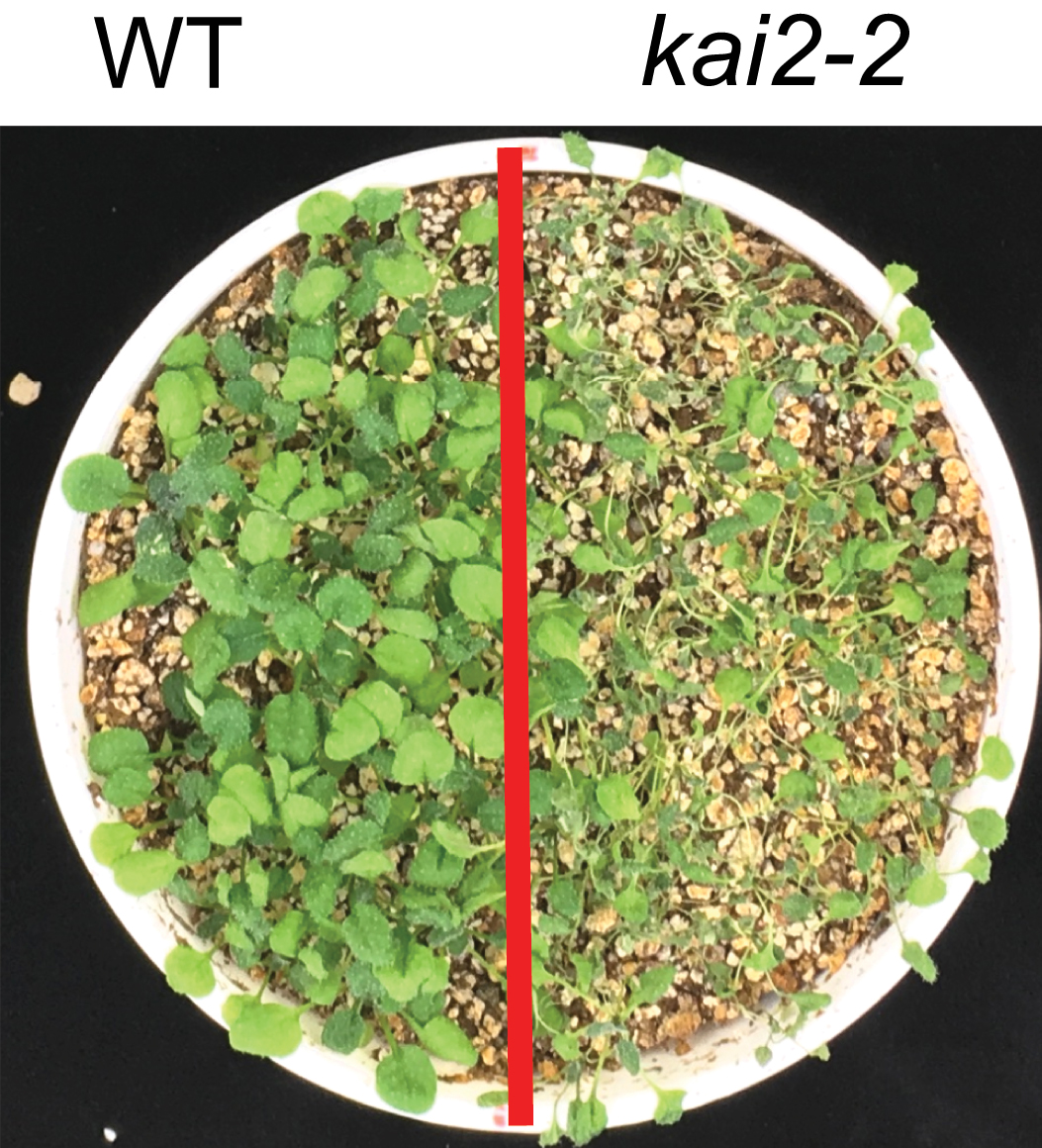
After 14 days without water, the wildtype Arabidopsis plants (left) were in much better condition than the kai2 mutants (right).
Where did this research begin?
Two independent labs found that the phytohormone (strigolactone)-related protein called MAX2 regulates drought resistance. At CSRS, a team of researchers led by Lam-Son Phan Tran suspected that the KAI2 receptor for [itg-tooltip tooltip-content=”<p><strong>Karrikins</strong> are compounds found in smoke that are thought to trigger seed germination after fires.</p>”]karrikins[/itg-tooltip] might have some effect on drought resistance because karrikins also need MAX2 to function properly (see this paper to learn more about karrikins and why this was suspected). To test this idea, the team first looked at how kai2 mutant plants responded to water deficits.
What did they find?
Mutant plants without functioning KAI2 receptors did worse that wild-type plants when water was unavailable, but actually grew better than wild-type plants when the plants were well-watered. “This was a clear indication that we were on the right track”, explains Tran. “It showed that Arabidopsis plants need normal KAI2 signaling to properly adapt to the water-deficient environments.”
Why was this happening?
Testing showed that the kai2 mutant plants contained less water than the wild-type plants, meaning that for some reason they were losing water faster when water was unavailable. Further experiments showed that this was happening for four different reasons.
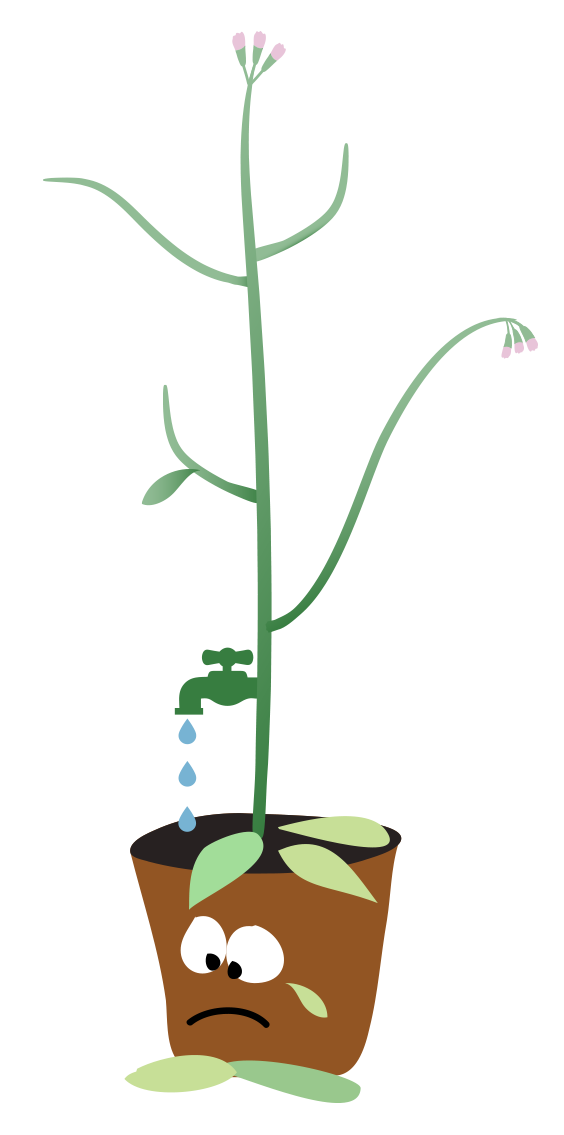
A sad kai2 mutant Arabidopsis plant that can’t help leaking water.
? Damaged cell membranes
The team found that the mutants suffered from greater electrolyte leakage, which indicated that their cell membranes were injured. This type of injury allows water to seep out of the cells.
? Bigger pores
They found that stomata openings were larger in the mutant plants. Just as we have pores in our skin, plants have pores on their leaves and stems called stomata. Normally, these pores close during drought to prevent water from leaving the plant’s body. In the kai2 mutants, the larger pore openings mean that more water can leak out.
? Messed up cuticles
A microarray analysis indicated that genes related to the formation of leaf cuticles were downregulated in the mutant plants when they experienced drought stress. A leaching test showed that the defective cuticles allowed water to leak out of the mutant leaves without involving the stomata.
? Missing pigment
The microarray analysis also revealed downregulation of genes affecting the production of pigment compounds called anthocyanins. “Anthocyanins are what give some plants their vibrant colors,” says Tran, “but they can also protect plants from drought. In fact, we observed that the mutant plants were paler than the wild-type plants.” So, this was very interesting and the team measured anthocyanin levels and confirmed experimentally that they were lower in the mutants than in the wild-type plants.
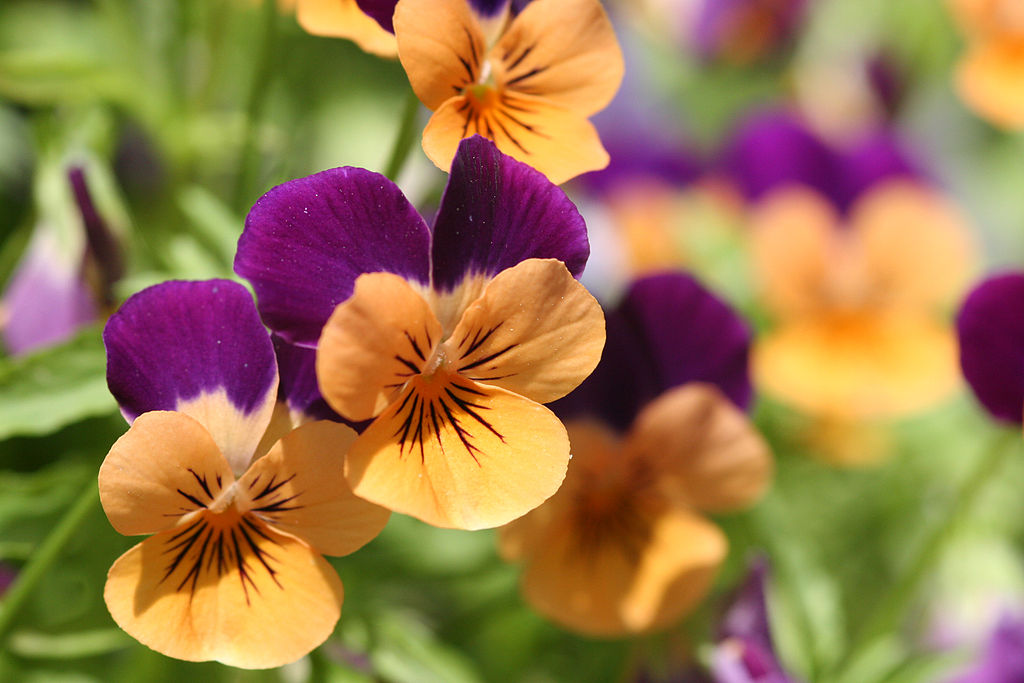
Anthocyanins give these pansies their dark purple pigmentation. Photo by en:User Debivort [GFDL or CC-BY-SA-3.0], via Wikimedia Commons.
When looking for ways to improve plant resistance to drought, we first need to know who the players are. As Tran explains, “Now that we know that loss of KAI2 receptor function prevents plants from adapting to drought, we can look for ways to manipulate the karrikin signaling pathway. This could be a promising tool for improving drought resistance in crops and creating more sustainable agriculture.” ?
Recently I was struck by all the different ways that scientists are using genetics studies and manipulating biological signaling pathways to help plants grow in poor conditions such as drought. At our Center for Sustainable Resource Science (CSRS), we’ve seen genetic analyses lead to several different solutions. In April, a collaborative project reported successful field trials of a transgenic rice that grew better and yielded more rice in drought-like conditions than unmodified rice plants. Then in the summer, another CSRS study examined an Arabidopsis mutant and ended up discovering that adding vinegar (acetic acid) to soil can help plants resist drought. Now a new CSRS study has identified a receptor that has multiple functions in promoting plant survival when water is unavailable. The study has already gained attention, being highlighted in the December 8 issue of Science (Editor’s Choice- “This week in other journals”).
What I like about the study is that it brings up a few important concepts. First, plants can survive when water is scarce by keeping more water inside their bodies. That seems pretty basic, but yours truly had never really understood that until now (despite writing about it before! #sadAdam). Another important concept is that plants have ways to physically change their bodies in order to accomplish this. Now comes the cool part. Like animals, plants use hormones (called phytohormones) that regulate these kinds of physical changes. Understanding how phytohormones work and what regulates the them is one way that scientists can help find targets for “therapies” that will allow plants to thrive even during water shortages and drought.
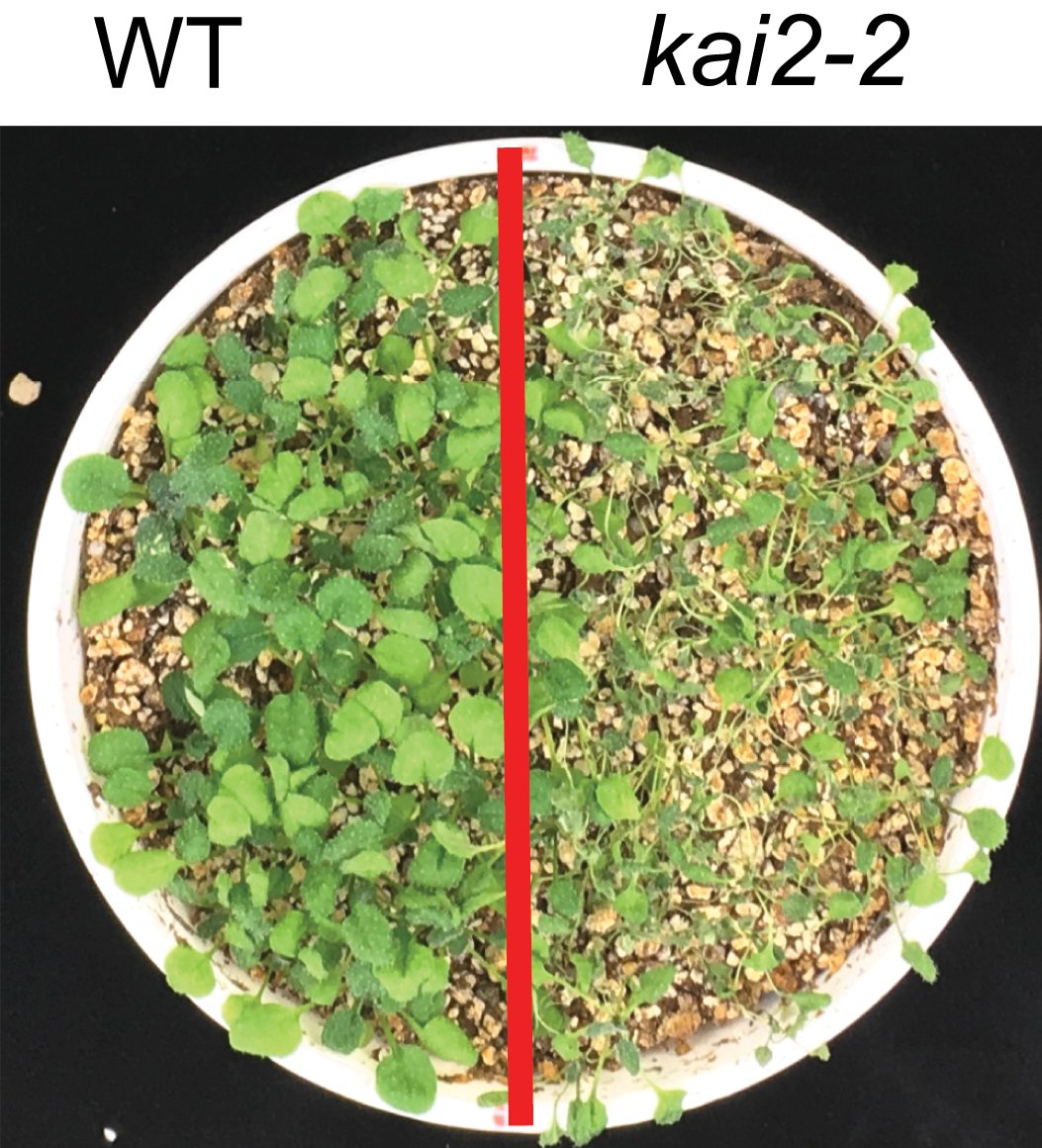
After 14 days without water, the wildtype Arabidopsis plants (left) were in much better condition than the kai2 mutants (right).
Where did this research begin?
Two independent labs found that the phytohormone (strigolactone)-related protein called MAX2 regulates drought resistance. At CSRS, a team of researchers led by Lam-Son Phan Tran suspected that the KAI2 receptor for [itg-tooltip tooltip-content=”<p><strong>Karrikins</strong> are compounds found in smoke that are thought to trigger seed germination after fires.</p>”]karrikins[/itg-tooltip] might have some effect on drought resistance because karrikins also need MAX2 to function properly (see this paper to learn more about karrikins and why this was suspected). To test this idea, the team first looked at how kai2 mutant plants responded to water deficits.
What did they find?
Mutant plants without functioning KAI2 receptors did worse that wild-type plants when water was unavailable, but actually grew better than wild-type plants when the plants were well-watered. “This was a clear indication that we were on the right track”, explains Tran. “It showed that Arabidopsis plants need normal KAI2 signaling to properly adapt to the water-deficient environments.”
Why was this happening?
Testing showed that the kai2 mutant plants contained less water than the wild-type plants, meaning that for some reason they were losing water faster when water was unavailable. Further experiments showed that this was happening for four different reasons.

A sad kai2 mutant Arabidopsis plant that can’t help leaking water.
? Damaged cell membranes
The team found that the mutants suffered from greater electrolyte leakage, which indicated that their cell membranes were injured. This type of injury allows water to seep out of the cells.
? Bigger pores
They found that stomata openings were larger in the mutant plants. Just as we have pores in our skin, plants have pores on their leaves and stems called stomata. Normally, these pores close during drought to prevent water from leaving the plant’s body. In the kai2 mutants, the larger pore openings mean that more water can leak out.
? Messed up cuticles
A microarray analysis indicated that genes related to the formation of leaf cuticles were downregulated in the mutant plants when they experienced drought stress. A leaching test showed that the defective cuticles allowed water to leak out of the mutant leaves without involving the stomata.
? Missing pigment
The microarray analysis also revealed downregulation of genes affecting the production of pigment compounds called anthocyanins. “Anthocyanins are what give some plants their vibrant colors,” says Tran, “but they can also protect plants from drought. In fact, we observed that the mutant plants were paler than the wild-type plants.” So, this was very interesting and the team measured anthocyanin levels and confirmed experimentally that they were lower in the mutants than in the wild-type plants.
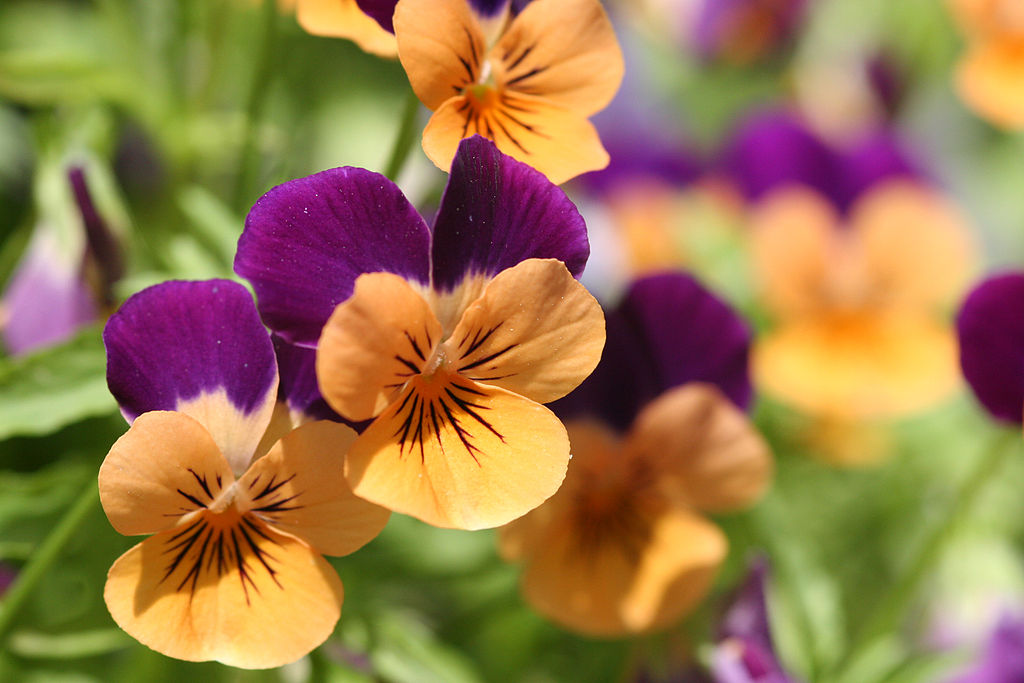
Anthocyanins give these pansies their dark purple pigmentation. Photo by en:User Debivort [GFDL or CC-BY-SA-3.0], via Wikimedia Commons.
When looking for ways to improve plant resistance to drought, we first need to know who the players are. As Tran explains, “Now that we know that loss of KAI2 receptor function prevents plants from adapting to drought, we can look for ways to manipulate the karrikin signaling pathway. This could be a promising tool for improving drought resistance in crops and creating more sustainable agriculture.” ?
Further reading
Li et al. (2017) The karrikin receptor KAI2 promotes drought resistance in Arabidopsis thaliana. PLOS Genetics. doi:10.1371/journal.pgen.1007076.
Li W, Tran, LS (2015) Are karrikins involved in plant abiotic stress responses? Trends. Plants Sci. 20(9):535–538. doi:10.1016/j.tplants.2015.07.006.
[yuzo_related]

